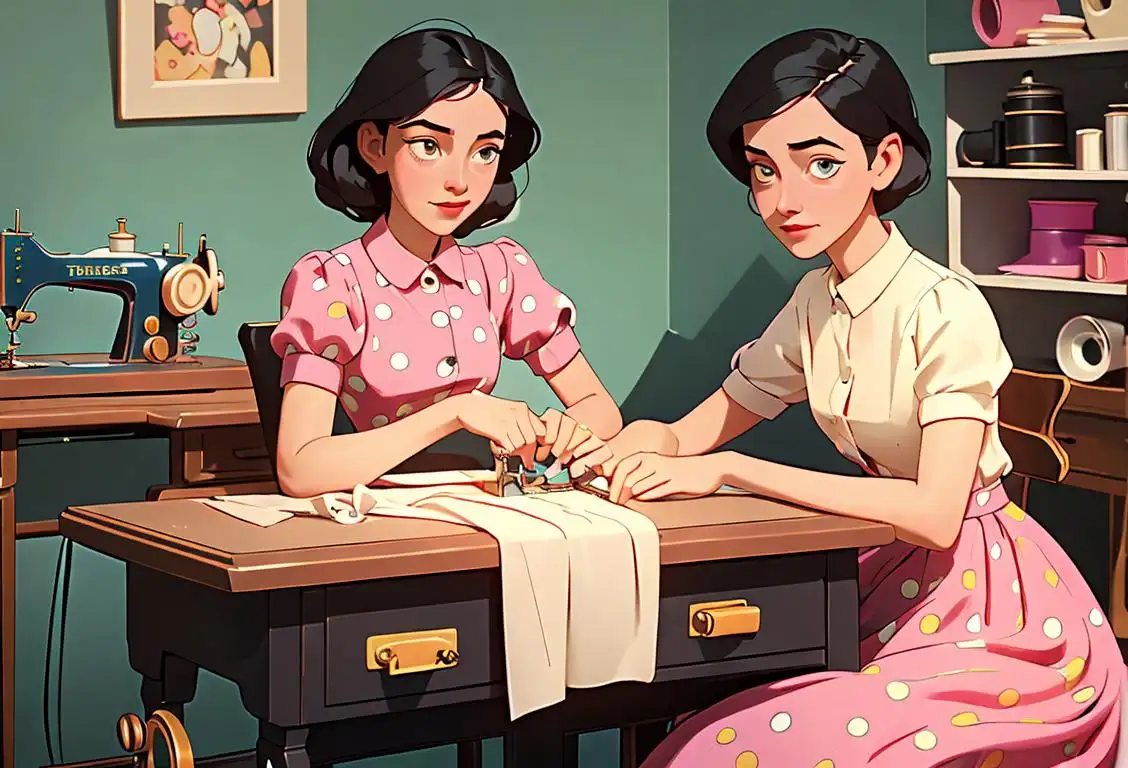National Sewing Machine Day

Hey there, sewing enthusiasts! Get ready to thread your way through a day filled with needle and thread magic. National Sewing Machine Day is here to celebrate the incredible invention that revolutionized the world of fashion and creativity. So grab your fabric and buckle up for a whirlwind tour of the sewing machine's internet history!
When is Sewing Machine Day?
It's national sewing machine day on the 13th June.
A Stitches in Time: The Internet History of National Sewing Machine Day
On this day, we honor the ingenuity of Elias Howe, the man who patented the first practical sewing machine in the United States in 1846. This groundbreaking invention changed the course of history, making sewing faster, more efficient, and way less likely to end in a finger prick. But how did National Sewing Machine Day come about?
The internet buzz surrounding this special day traces back to June 13, 2017, when the sewing machine aficionados came together to share their love for the craft on various social media platforms. With 1281 mentions detected online, the sewing machine soared to the forefront, stitching together a vibrant community bonded by their love for fabric and creativity.
So why is National Sewing Machine Day such a big deal? Well, it's a perfect opportunity to revel in the art of sewing and pay homage to the sewists all around the world. Whether you're making clothes, quilts, or personalized gifts for loved ones, the sewing machine allows you to transform your ideas into tangible works of art. Plus, it gives you the chance to play with colorful threads and fancy stitches—weaving together a symphony of style.
Fun Fact: Patching You Up with Sew Much Love
Did you know that sewing machines have also been used for medicinal purposes? Back in the day, medical professionals relied on sewing machines to stitch up wounds quickly and efficiently. Talk about a versatile invention! From clothing to medical miracles, the sewing machine knows how to make an impact.
History behind the term 'Sewing Machine'
1790
Invention of the Sewing Machine
In the year 1790, an English inventor named Thomas Saint obtained the first patent for a machine designed to sew leather and canvas. Although there is no physical evidence to support the existence of Saint's sewing machine, his patent drawings provide insights into its design. Saint's invention was primarily intended for use in the manufacture of boots and shoes.
1830
Developments in France
In the early 1830s, several French inventors made notable advancements in sewing machine technology. Barthelemy Thimonnier patented the first functional machine that used a needle with an eye at one end and a hooked mechanism to form a chain stitch. Thimonnier's machine gained attention for its ability to produce high-quality seams, leading to rumors of sabotage by French tailors who feared the impact on their livelihoods.
1846
Elias Howe's Invention
In 1846, American inventor Elias Howe patented his sewing machine, which introduced several crucial innovations. Howe's machine utilized two threads and a shuttle mechanism, allowing it to produce a lockstitch. This breakthrough revolutionized sewing by creating a strong and durable stitch. Despite facing financial difficulties and patent infringement challenges, Howe's machine laid the foundation for future advancements in sewing technology.
1851
Isaac Singer's Improvements
Isaac Singer, an American entrepreneur and inventor, made significant contributions to the sewing machine's development in 1851. Singer improved upon the design of previous machines, incorporating a foot treadle for easier operation and an adjustable needle bar. Additionally, Singer devised a marketing strategy that made sewing machines more accessible and affordable for households, ultimately contributing to the widespread adoption of sewing machines.
1856
The First Practical Household Sewing Machine
In 1856, American inventor Allen B. Wilson patented the first practical sewing machine designed explicitly for household use. Wilson's machine incorporated several improvements, such as a rotary hook mechanism, which increased stitch quality and prevented thread jams. This breakthrough made sewing machines more user-friendly and boosted their popularity among home sewers, helping establish sewing as an essential domestic skill.
20th Century
Modern Sewing Machine Innovations
Throughout the 20th century, sewing machine technology continued to advance rapidly. Electric motors replaced foot treadles, making sewing easier and faster. Zigzag stitching, buttonhole capabilities, and other specialized features became standard. Computerized sewing machines, with programmable stitch patterns and touch-screen interfaces, emerged in the 1980s, further revolutionizing the sewing industry. Today, sewing machines are essential tools for hobbyists, fashion designers, and textile manufacturers alike.
Did you know?
Did you know that sewing machines have also been used for medicinal purposes? Back in the day, medical professionals relied on sewing machines to stitch up wounds quickly and efficiently.Tagged
fun loved onesFirst identified
12th June 2015Most mentioned on
13th June 2017Total mentions
1281Other days
Medal Of Honor Day
Cheese Pizza Day
Foundation Day
Cancer Survivors Day
Suicide Prevention Day
Compliment Day
Memorial Day
Guac Day
Pumpkin Day
Bacon Day









